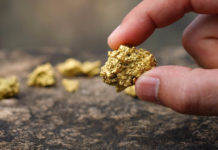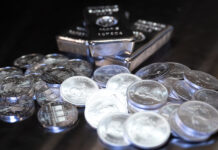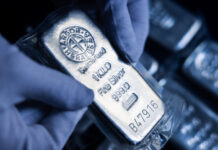
[miningmx.com] – TALK about kicking a yellow metal when it’s down. Data from the People’s Bank of China last month showed it had recorded a 57% increase in its gold holdings – it’s first disclosure in five years – yet this was still grounds for a concerted attack on the metal by “the shorts’.
Short traders are investors who are betting the price of gold will weaken. Thus they found in the central bank’s data that at 1,658 tonnes its gold reserves were a fraction of its $3.7 trillion in foreign exchange reserves.
More to the point, the fraction was itself a disappointing number. At some some 1.67% of the country’s foreign exchange reserves, this was only slightly higher than 1.5% recorded in 2009 when, in fact, gold bugs were expecting China to materially increase its exposure to gold.
Anonymous funds subsequently dumped 57 tonnes of gold in overnight trade in Shanghai and New York at a time when there was a minimum of trade activity, or liquidity, so as to have maximum impact on the value of the metal. The impact was that the price of gold sank to its lowest level in five years of just over $1,100 from $1,158/oz the day before.
It’s all very disheartening news, but not completely a surprise.
Goldman Sachs has forecast more weaker gold prices as the year drags on. “Our gold price forecasts remain unchanged at $1,180/oz in three months, $1,150/oz in six months and $1,050/oz in 12 months,’ it said.
“We continue to expect continued strengthening of the US dollar and gradual increase in US real rates, driven by strong US economic recovery and expected Fed rate hike in December to dictate gold prices,’ Goldman Sachs said.
The apparent austerity measures accepted by Greece’s government has also taken the panic out of Eurozone equation which may have eventually turned investors to gold as its safe-haven status was reaffirmed.
In any event, the gold price remains vulnerable to good news. Robin Bhar, an analyst at Societe Generale, told Bloomberg News on July 21 that: “I doubt this is the final nail in gold’s coffin. I think we can add a few more’.
From a local perspective, gold price weakness is partly ameliorated by a weaker rand against the dollar. The average rand price of gold increased 1% in June as the US gold price was “outdone’ by a 3% depreciation in the rand.
Yet this is small beer set against the operational challenges gold counters face in Johannesburg, especially those companies with near 100% exposure to South Africa and the possibility of strike action.
The Association of Mineworkers & Construction Union (AMCU) has now officially turned down the gold producer’s ‘final offer’ which surely edges them closer to a certain strike. The AMCU is seeking the R12,500 per month for starter salaries that formed the clarion call of its five month strike in the platinum sector last year.
“With AMCU making its intentions clear, a sector-wide strike in gold seems unavoidable, albeit for only a portion of the workforce at each company,’ said Macquarie Research. This would most affect Sibanye Gold and Harmony Gold which have high AMCU membership among its labour – of 38% and 15% respectively – and little offshore production.
The likelihood is that a strike is coming, said Leon Esterhuizen, a gold analyst for CIBC Capital Markets. AngloGold Ashanti has the least exposure to South Africa which protects it slightly whilst Sibanye has a strong balance sheet which could make it capable of fighting a strike.
Esterhuizen feels there may be some trading benefit in gold shares provided investors understand these are not for holding indefinitely. “South Africans have shown the ability to pull a rabbit from a hat when all seems lost, and the mining sector is no exception,’ he said.
“If we get a decent wage deal and with some headwinds from a weaker rand or even a slightly higher US dollar gold price, the upside could be very much worth getting involved for right now,’ he said.
There’s also a competing view that gold has not entirely lost its safe-haven status, according to a recent report by JP Morgan.
It said in a note last month that gold had “held up relatively well, by only falling 38% from its 2011 peak. Copper is 48% down from its 2011 China peak, iron ore is 72% lower and oil has fallen 65% giving a deflationary shock to the global economy. Within the precious metals space, platinum is down 53%, and silver is 61% lower.
“This relative outperformance from gold is what we’d expect,” said JP Morgan analyst John Bridges.
“What’s confusing is the deflationary backdrop which probably contributed to the disappointing US$ gold price action during the Greece crisis, even as the yellow metal performed in other currencies,” he said.










